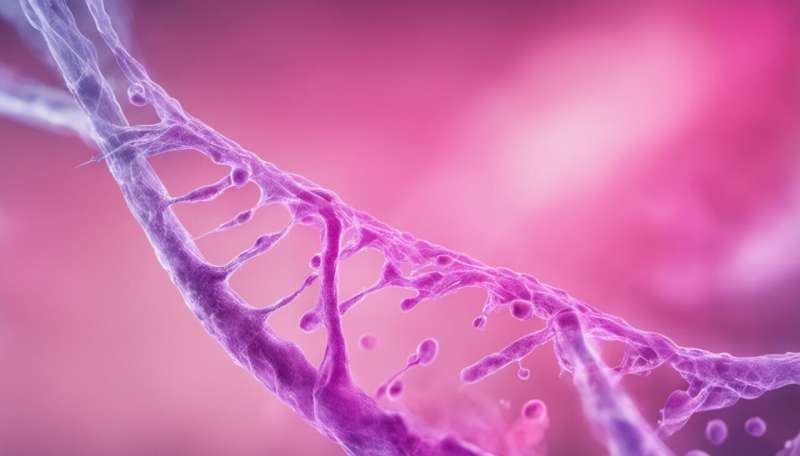Invasive breast cancers punch tunnels into neighboring tissue

Cancers pose the greatest danger when they become invasive and then spread from their originating tissues throughout the body.
Although scientists have long known that cells have a chemical means of breaking free, Stanford researchers have discovered that breast cancer cells can also physically push their way out of their normal confines to become invasive tumors. The work could point to new ways of preventing cancers from spreading.
The findings, published in Nature Communications, could also apply to prostate, liver, skin and many other cancers that arise from the epithelium, the thin layer of cells that lines the outer edge of many bodily organs. The epithelium is surrounded by a mesh-like structure known as the basement membrane, a thin matrix that encloses, protects and separates epithelial cells from the surrounding tissue.
Ovijit Chaudhuri, the assistant professor of mechanical engineering who led the study, said the work reveals a previously unknown mechanism cancerous cells use to break through the basement membrane, allowing the tumor to become invasive.
"Showing how cells can physically invade the basement membrane suggests new therapeutic strategies for blocking invasion," said Chaudhuri, who collaborated with a team of engineers and medical scientists on this interdisciplinary research.
Previous research had shown that epithelial cancers use chemical tricks to invade nearby tissue. They do this by forming protrusions called invadopodia, which secrete chemicals that act like an acid to burn through the basement membrane.
Katrina Wisdom, a graduate student in Chaudhuri's lab and co-author on the paper, said the team's work shows invadopodia can also use physical force to punch through the basement membrane rather than simply relying on chemicals, known as proteases.
The group made its discovery by embedding breast cancer cells in a gelatin-like biogel that mimics the basement membrane – with one major exception. The biogel was not susceptible to protease secretions. Having nullified chemical action as an escape mechanism, the researchers used time-lapse microscopy to track the cancer cells and see whether they could move through the gel. If yes, the cells must have something other than just chemical means of escape.
As it turned out, the cells could burrow through the gel. The time-lapse microscopy revealed how. Wisdom said the images show that cancer cells used their invadopodia like stiff arms to tear tiny holes in the biogel. Time and again the cancer cell formed and retracted its invadopodia until the repeated physical battering created an opening large enough for the entire cancer cell to scoot through. (See animation of this battering process.)
Chaudhuri said the experiments revealed a previously unknown process because the biogel more accurately mimicked human tissue. It was based on the emerging idea that human tissue, especially cancerous tissue, can be somewhat malleable, like Silly Putty, rather than elastic like rubber bands. Force applied to malleable tissue imparts a permanent effect while elastic materials snap back into shape when force is released. In prior experiments predicated on the assumption of tissue elasticity, the tissue was not susceptible to breaching by a mere physical attack. But in Chaudhuri's malleable biogel, invadopodia were able to punch out escape tunnels by brute force.
Chaudhuri said the discovery of a physical role for invadopodia, independent of their previously known protease secretions, might explain why cancer drugs known as protease inhibitors haven't been effective. After scientists discovered the chemical action of invadopodia, cancer researchers developed these drugs known to stanch protease activity. But Chaudhuri said clinical trials of those drugs proved disappointing.
With the new findings about a physical means of escape, Chaudhuri is working with researchers at Stanford Medicine on strategies for blocking both the physical and chemical escape mechanisms, in the hopes that this will lead to new ways of preventing cancers from becoming dangerous.
More information: Katrina M. Wisdom et al. Matrix mechanical plasticity regulates cancer cell migration through confining microenvironments, Nature Communications (2018). DOI: 10.1038/s41467-018-06641-z
















